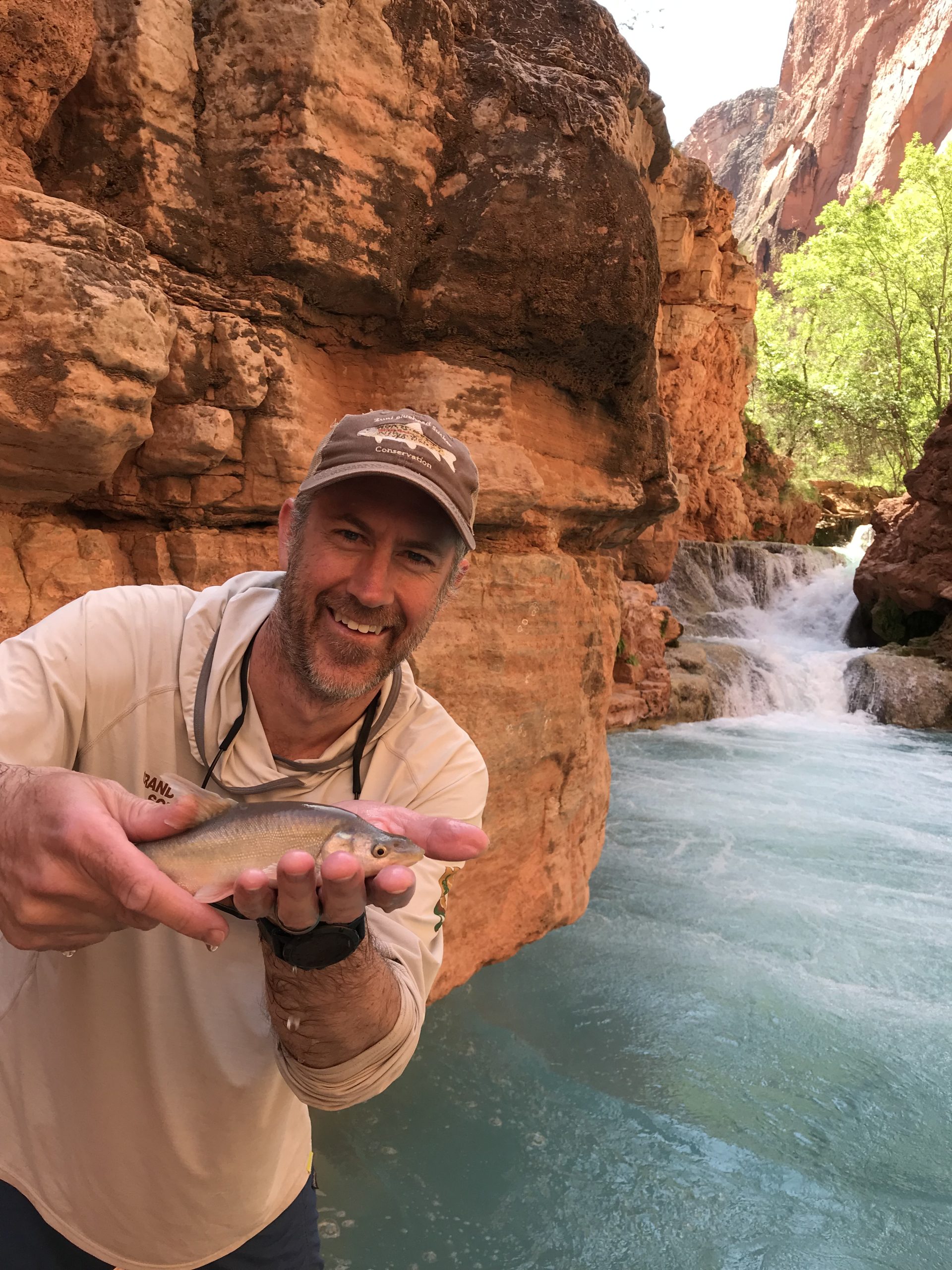Some information may be outdated.
Far from an impediment, the humpback chub’s namesake above-forehead knob actually acts as a stabilizer in the turbulent waters the fish calls home. This week, we discuss the humpback chub with Brian Healy, a native fish ecologist at Grand Canyon National Park and a Ph.D. candidate at Utah State University. We cover the impressive evolution of the chub, threats to the species’ survival and why counting fish isn’t quite the same as counting, say, trees.
Science Moab: What is the humpback chub?
Healy: The humpback chub is a fish endemic to the Colorado River system; it’s found nowhere else in the world. The fish gets to be a couple of feet long and can live up to 35 years. It evolved in a really dynamic and volatile environment, with big spring runoff and winter snowmelt flooding, contrasting with really warm conditions in the summer. So it’s really tough and built for navigating large rapids.
Science Moab: Why is such a tough fish now endangered?
Healy: The humpback chub and other Colorado River endemic fishes have experienced incredible change to their habitat. It probably started with the introduction of non-native fish. Then we started building dams on the Colorado River that fragmented and profoundly changed the ecosystem, including limiting temperatures to cold, stable conditions in which the chub couldn’t reproduce very well. For example, the Glen Canyon Dam changed the river discharge from being seasonably warm and muddy to colder and more stable year-round. Around Moab and in the Upper Colorado River, you don’t have that same temperature issue, so you have many more warm-water invasive species that we’re concerned may expand into the Grand Canyon in the future.
Science Moab: What have you been doing to reduce the threat of invasive species?
Healy: Grand Canyon National Park has been implementing some conservation actions with the support of the Bureau of Reclamation, the Fish and Wildlife Service, and other organizations. We’ve been translocating juvenile humpback chub from a long-sustained source population. [“Translocation” is the human-assisted movement of individuals from a source population to other waters within their historical range.] We’re taking those juvenile fish and moving them into tributaries to try to establish new populations. Prior to the translocations of the humpback chub, we’re also removing trout from those environments. My research involves studying the response of the fish communities to these actions.
Science Moab: How do you remove invasive species without hurting existing humpback chub?
Healy: To remove trout, we’ve generally been using electrofishing. This is a really common tool to monitor fish populations. We introduce an electrical current into the water that temporarily stuns the fish so we can net them up, and then we can selectively move the non-natives and release the native fish unharmed.
Science Moab: And then how do you count fish to monitor populations?
Healy: Fish are hard to manage. It’s kind of like managing a forest and counting trees in the forest, except you can’t see the trees and they’re moving around all the time. We use mathematical models to estimate their abundance based on the number we catch, and then the number that we recapture.
Science Moab: How are you working with Indigenous communities in the area?
Healy: One thing that’s really important in these programs is that there are 11 traditionally-associated Indigenous tribes that have cultural roots in the Grand Canyon. Their beliefs and cultures are very diverse, and for some, the taking of the life of invasive species can be offensive. We’re trying our best to mitigate that. One strategy is to move certain fishes out of Glen Canyon and re-release them in Lake Powell. Through consultation with some of the tribes, we’ve also agreed to provide the fish for beneficial use so that people can eat them. Some of the tribes have ceremonial eagle aviaries, so we’ve supplied some trout to feed those eagles as well.
Science Moab is a nonprofit dedicated to engaging community members and visitors with the science happening in Southeast Utah and the Colorado Plateau. To learn more and listen to the rest of Brian Healy’s interview, visit www.sciencemoab.org/radio. This interview has been edited for clarity.
Appreciate the coverage? Help keep local news alive.
Chip in to support the Moab Sun News.





